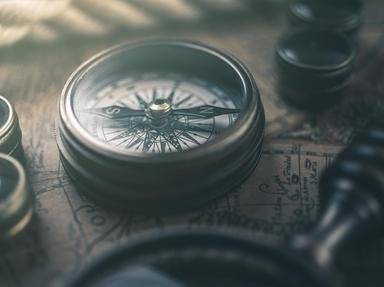Quiz Answer Key and Fun Facts
1. Ireland is divided into four provinces. One of those provinces, Leinster, is sub-divided into twelve counties. Which of the following four counties, home to the 13th-century King John's Castle which stands on banks of the River Shannon, is NOT in Leinster province?
2. There were more than 300 US cities of more than 100,000 people at the time of the 2010 Census, and 17 of those start with "L". Home to the pictured historic Roman Catholic Cathedral of Saint John the Evangelist (or 'La Cathédrale St-Jean'), which of those 17 is the only one located in the only "L" state, Louisiana?
3. The mountains of the Cevennes National Park stretch across four of France's 100 departments. Which of those departments, the northernmost in the Languedoc-Roussillon-Midi-Pyrénées region with its capital at Mende, is named for the range's highest peak?
4. The pictured coat of arms belongs to one of the four "L" countries in Europe. Equivalent in size to Sri Lanka, it is only marginally larger than West Virginia. Where could you travel along the Nemunas River (Europe's 14th-lengest), sail across Lake Vistytis, go bird-spotting in Aukstaitija National Park, and visit the geographical centre of Europe?
5. Located in the extreme southwwest of the country on the Gulf of Guinea near to the border with Ghana, this city is also the country's chief seaport. Founded by traders, it became the capital of the German protectorate on what was then known as the "Slave Coast" in 1897, and continued that role when the country became a French colony after WWI. Capital of the country whose flag is pictured, which city is this?
6. There are only eight rivers of more than 600 miles in length that start with "L". By far the largest, at 2,279 miles the 11th-longest in the world, rises near Russia's Lake Baikal, in the mountains of the same name. On its long journey to the Laptev Sea, it flows past the picturesque pillars (which share a name with the river) shown in the photo. Which river is this?
7. The picture shows the official flag of a traditional English county. A major tributary of the Trent, the River Soar is the county's principal river, and its highest point is Bardon Hill at 912 feet. Gastronomically, the county is famous for Stilton cheese and the pork pie, and is home to the Chevelswarde and Welland Valley vineyards. Where must you go to visit the ruins of Ashby de la Zouch Castle or Mount St Bernard Abbey?
8. The picture shows the landscape typical of southern Tibet. When the first ascent of the 25,172-feet high Saser Kangri II East in India was completed on August 24,2011, it left just three of the world's 100 highest peaks unconquered by humans. Which of those three, a northern outlier of the Himalayas just inside Tibet's southern border, has a name beginning with "L"?
9. Home to the only medieval English cathedral with three spires (pictured), this is one of only six English cities that start with "L". The major Roman roads, Icknield Street and Watling Street, cross just south of the city, whilst the National Memorial Arboretum lies just to the north. The birthplace of the man who compiled the first "Dictionary of the English Language", which city is this?
10. The pictured gold-covered stupa dating back to the third century is both a national symbol here and the country's most important national monument. The country's official tourism slogan is "Simply Beautiful": a mix of culture, colonial architecture, gastronomy, trekking and wildlife saw the country named as the "World Best Tourist Destination" in 2013 by the European Council on Trade and Tourism. Which country is this?
Source: Author
EnglishJedi
This quiz was reviewed by FunTrivia editor
spanishliz before going online.
Any errors found in FunTrivia content are routinely corrected through our feedback system.
